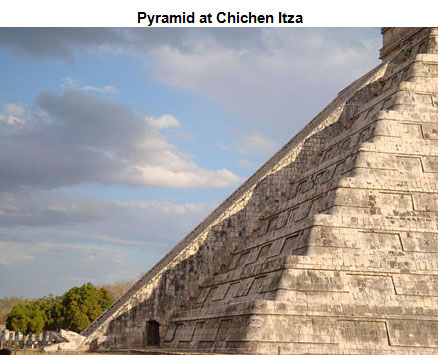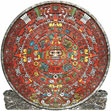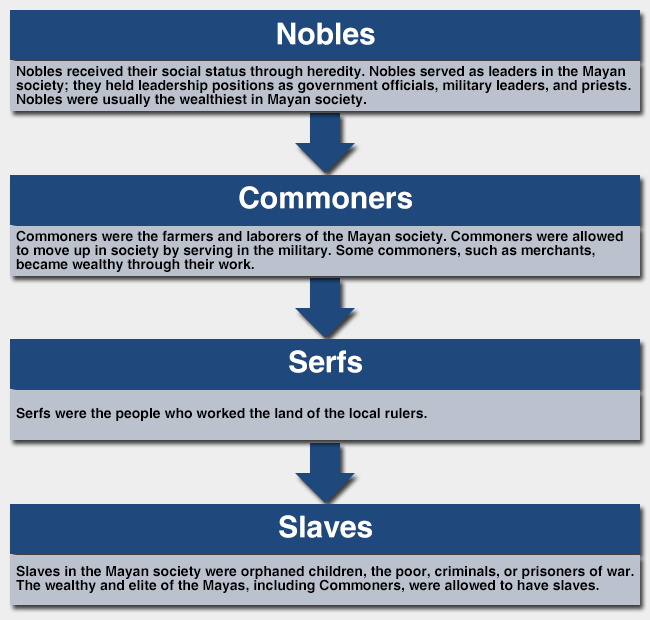

Are you familiar with the image of this famous site? Located in Mexico’s Yucatan Peninsula, this pyramid is named Chichen Itza. The pyramid was created by the Mayas between AD 250 and 900. The Mayas built this pyramid and elaborate cities without modern tools, proving that this civilization was advanced in technology. Click on the link to learn more about the pyramid.
The Mayas lived in Mesoamerica; they were concentrated in modern-day Guatemala, Belize, Honduras, El Salvador, and Southern Mexico, including the Yucatan Peninsula. Click on the link below to access an interactive map of the areas of Mexico and Central America once occupied by the Mayan civilization. Click on each image within the map for more images and information.
Chichen Itza is just one of the achievements of the Mayas that make this civilization a dynamic and advanced one. The Mayan civilization lasted approximately 2000 years. Mayan achievements are not just limited to architecture and astronomy. The Mayas were advanced in many aspects of their civilization.
Click on the link below to watch a video and learn about the Mayan civilization.

The Mayas had a deep understanding of astronomy and incorporated it into various aspects of its civilization. The location of the pyramid at Chichen Itza is based on the position of the sun at the spring and fall equinoxes. The Mayas studied the sun, moon, and stars and used what they learned to predict solar eclipses. Their knowledge of astronomy also helped in planting and harvesting their crops.

One contribution of the Mayas found in contemporary civilizations is the calendar. The Mayas developed at least four types of calendars; two are the most familiar: the Calendar Round and the Long Count. The Calendar Round is based upon two overlapping cycles: a sacred year made of 260 sacred days and a secular year made of 365 days. In the Calendar Round, a full cycle is 52 years.
The Long Count calendar, also known as the Grand Cycle, had a longer cycle than the Calendar Round. Though they worked the same, the Grand Cycle had a full cycle of more than 5000 years. To learn more about the Long Count calendar, click the link below.
Similar to the hieroglyphs of the ancient Egyptian civilization, the Mayas created an elaborate writing system. Based on records of European explorers, the Mayan hieroglyphs, also called Mayan Glyphs, were used, at least, until the arrival of the Spanish. Mayan Glyphs were made up of a series of symbols that only certain groups within the Mayan population could read. Even after the decline of the Mayan civilization, there were still individuals who could read and write the Mayan Glyphs.
The Mayas used stone to record the Mayan Glyphs, but they also used it to carve religious elements, calendars, and astrological observations.
The Mayas created thousands of paper books and even developed libraries as centers of literacy. However, as the civilization declined so did the production of books. Libraries, and the books housed inside, were left with the ruins of the great Mayan cities.
The Mayas were also advanced in mathematics. Although the number zero is believed to have been developed around 300 BC in the Fertile Crescent, the Mayas are credited with developing it independently, making the Mayas one of a few ancient civilizations to understand the concept of zero. Pictured below is what is believed to be the Mayan symbol of zero.

The Mayas had a structured social hierarchy. Read more about the Mayan society below.

In contrast to the Incas, the Mayas were not a single empire. The Mayan political structure was a network of individual states that were connected through trade or ritual obligation. Each state had a ruler as well as a military leader. Human sacrifice was used to control the people.
The Mayas had various ways to produce food. They created unique farming methods that allowed them to grow crops such as corn and squash in places that were usually difficult to farm. The Mayas used terrace farming in the mountainous region and forest farming in the dense jungle areas.
There are many theories about how the Mayan civilization collapsed. Theories include the closing of trade routes, the spread of disease, or overpopulation. There have been claims that agricultural practices also led to the decline of the Mayas.
Sources of images used for this section as they appear, top to bottom: